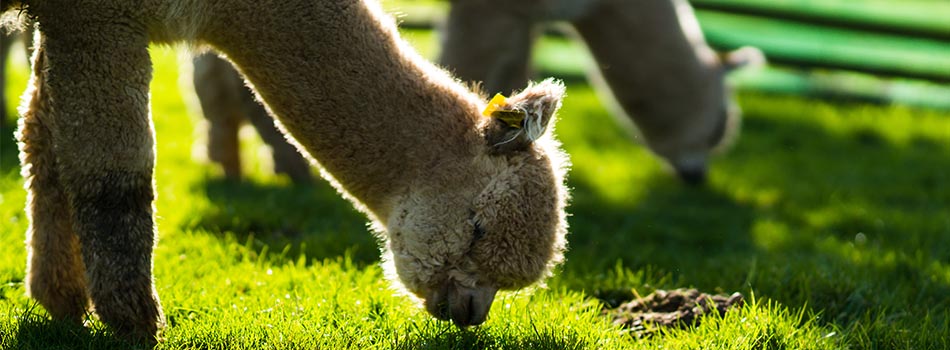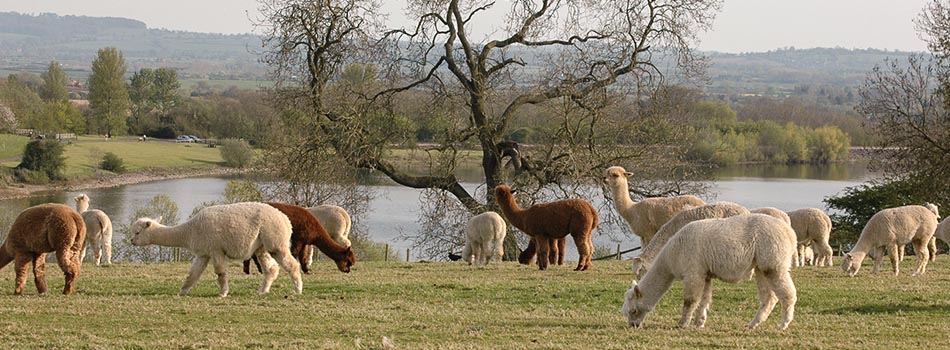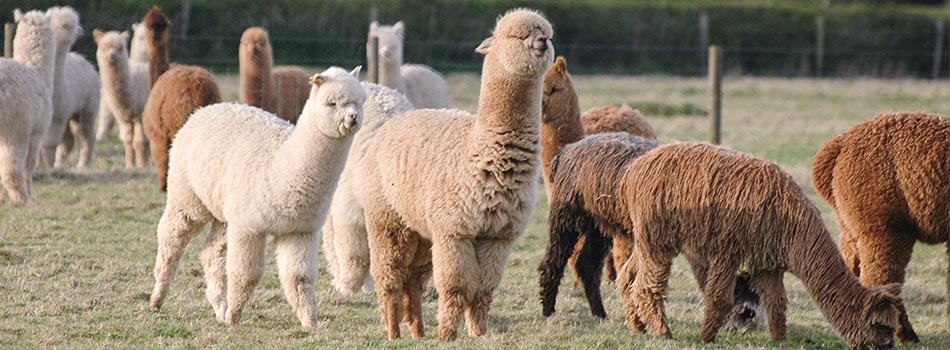ALPACA HISTORY: PRESENT

Today there are over two million alpacas in South America, yet it is hard to see how, without investment on a grand scale, the alpaca population can increase dramatically. In some harsh winters it has been known for the Peruvians to lose up to 200,000 alpacas. Grazing is sparse, conditions are harsh and the young people, once educated, flock down to the cities where their university education can provide a lifestyle their parents can only imagine.
When I visited Peru I spent some time with a young man running a research station for an NGO who informed me that without investment on a massive scale the alpaca population in Peru was at it's maximum and that his task was to work with the indigenous farmers to improve quality rather than quantity of animals farmed. The mortality rate of cria some seasons if the rainy season is prolonged can be as much as 100%. In recent winters the National herd has been depleted by anything from 150-250,000 alpacas in a single season.
Basically in it's homeland the alpaca is still on the whole farmed using techniques that are embedded deeply in the culture and primitive lifestyle of the indigenous people. Quantity rather than quality still predominates as breeders are paid by weight for the fibre they produce. This is an issue that is only slowly being addressed today as the major processors of alpaca fibre realise that they must try and provide incentives to improve fibre quality. Yet the task is a huge one and not to be underestimated in a high altitude environment that is inhospitable and in a large part inaccessible. The rest of the world will never compete with South America on quantity of fibre for many decades to come. However on quality it has already made great strides and is improving at a rate that may soon see South American breeders buying back superior genetics.

Today the alpaca is rapidly spreading throughout the world as more and more people in numerous countries recognise the potential of this fascinating animal. Australia has managed to establish a thriving alpaca industry, likewise the USA. There have been alpacas exported to New Zealand, Canada, South Africa, China, Japan, Ireland, Belgium, Poland, France, Spain, Switzerland, Italy, Norway, Sweden, Finland, Denmark, Holland, Germany, Austria, Lithuania, Romania, Bulgaria and many more countries besides. The alpaca is spreading throughout Europe at a rapid rate and is truly becoming an international livestock.
The breeding programs applied in these new alpaca countries that have a long history of controlled agricultural development is far more sophisticated than the majority of practices in their native homeland. Record keeping is meticulous and registries exist for tracking the genetics of all the animals, veterinarian practices are heavily involved in the health and welfare of the animals and much science has been applied to the development of the alpaca. The improvement has been dramatic to say the least but many archaeologists and geneticists believe that even the most advanced alpaca is still fulfilling only 50% of its potential, so there's a long way to go.
However the alpaca is a niche luxury fibre within the great scale of things. There are probably only 3,500,000 alpacas in the whole world. There are 18,000,000 sheep in the UK alone. Alpaca represents only .0001% of the fibre processed into knitting yarns. As more and more countries become aware of the potential of this luxury fibre there is a demand developing which can never be fulfilled.
The UK herd is growing exponentially as each season passes. We are in a unique position to capitalize on the pioneering work of the larger herds on other continents as long as every breeder accepts that this is a long term investment based on continuous improvement. To own a few alpacas as pets is fine for some but to breed these animals there can only be one goal – to breed better than you have already.
The improvement in the British alpaca has been dramatic so far. As we begin to define more and more the genetics of the National Herd, improving one's alpacas should become a more certain game. No unique industry is formed without teething troubles and setbacks but one thing is certain: the alpaca is rapidly becoming a permanent part of the agricultural landscape of the UK.

CONTINUE TO ALPACA HISTORY: FUTURE